|
A few people have written me, telling me I'm lucky to have the opportunity to own and use Buchla equipment. Due to a unique set of circumstances, I guess I may be. This won't be a history lesson, but I'm sure you all know that since the discovery of electricity, radio, and electronics in general, there have been inventors and composers trying to make music with it. Various devices, from the theremin (invented by Léon Theremin) to the crude electronics utilized by people such as Louis and Bebe Barron (creators of the fantastic 'Forbidden Planet' soundtrack) have surfaced from time to time. It wasn't until the early 60's, however, that what we know as the 'synthesizer' came into being. There was Dr. Robert Moog, who created the instrument that bears his name, as well as Alan R. Pearlman, creator of the ARP synthesizer. These two are by far the most famous. What sets these two apart is the fact that, from the beginning, they went for the mass market, selling the stuff to rock stars of the era and recording studios. Walter (now Wendy) Carlos made the Moog famous with the landmark recording, 'Switched-On Bach'. Moog synthesizers appeared on a wide variety of recordings, everything from the Monkees to the Byrds. Both companies also married their stuff to the traditional piano/organ keyboard. Then, there was that 'other guy', Don Buchla, working on the West Coast. Buchla was from a more academic background. From the beginning, he primarily dealt with universities, and various avant garde composers, in particular, Morton Subotnick. In his early student days, Buchla composed pieces that used the recorded sounds of insects, among other things. His head was truly in a different place! Buchla did not think of the traditional keyboard as the natural thing to use as a primary controller. He did produce one, but he preferred touch plates to trigger various events within a system. He did not even like the word 'synthesizer'. To him, the word implied that it was meant to emulate traditional instruments. He preferred the term 'electronic musical instrument'. Buchla also did not go for the mass market. His instruments were done on a customer to customer basis, being assembled by a small staff to order, like a high end automobile. This last point is why Buchla did not become a household name like Moog and ARP. Among electronic music enthusiasts, it's also what gives Buchla the mystique it still has to this day. The fact that it was never really mass produced is also what makes Buchla gear so hideously rare. Buchla modules are fantastically open ended and open to a wide variety of experimentation. I won't go on and on. I'll get to the point of why I'm writing this. Buchla modules are rather high priced. But, there's no need to lament the fact that you can't afford them. There are a few companies that have produced, in Eurorack format, virtual Buchla clones, for much less money. Here's a few: Verbos Electronics Tom Verbos started out his career servicing Buchla equipment. The modules he produces use various Buchla modules as a starting off point. He has elaborated and added his own touches to classic Buchla designs. These second two have done the same as Verbos. They've re-interpreted Buchla functions in their own systems. All three of these companies also emulate, in varying degrees. The external design aesthetics of Buchla equipment, right down to the lettering typeface. If you own a Buchla system, these units will look and work very well with it. Of course, Buchla modules are not in Eurorack format, but the audio and control voltage lines will work with any Eurorack equipment you do own. The only thing you'll need are adapter cords for the control voltage lines. Buchla uses banana jacks and cables. All other Eurorack modules use standard 3.5mm patch cables. I made my own by soldering my own cables. I put a 3.5mm phone plug on one end, and a banana jack on the other. You can buy this stuff on line. The tip is the hot end. You will not need to use the ground.
This piece is not in any way intended to be any sort of put down of Buchla. Don Buchla, sadly passed away a couple of years back, but the company is still in operation producing the new 200e modules. I wish them all the best. As I mentioned in a previous EC piece, the 'Wogglebug' invented by my friend Grant Richter, is based on the Buchla random voltage source. Some of his other modules, by his Wiard synthesizer company also made use of Buchla circuit designs, notably, the 'Borg Filter' which is a combination of Buchla and Korg technology (hence the name!!) As long as we're on the subject of Buchla 'DNA' existing elsewhere, check out the Wiard Synthesizer Company. Grant Richter no longer owns it. He sold it to a woman named Cary Grace, and american expat now residing in England. She produces the various Wiard modules, including the original version of the 'WoggleBug'. Cary is a fantastic musician, technician, producer and all around synthesizer freak. She was in Milwaukee for a couple of years when Grant was transferring the Wiard company to her. She was a member of my band, F/i, for a time, and even produced and did the cover art for F/i's 'Venusian Holiday' LP. I have tremendous respect and admiration for her as a producer and artist, and feel privileged to have made her acquaintance. So, if you've got any money to spend, throw some at the Wiard company. The Wiard Modules ARE NOT in Eurorack format, but they are beautiful works of art in themselves. You won't be disappointed. I saw a lot of these modules on Grant's soldering bench when he was developing them. Check out the Wiard site, as well as Cary's own website. All this talk about DNA and clones sounds a bit SCI-FI-ish! But my point is this: If you don't have the means to own genuine Buchla gear, there are other things out there. I'll admit, I don't own any of that stuff myself, but I DO know people who do, and have read extensively about this(I'm addicted to message boards!). Having once owned classic 1970's Buchla modules, as well as currently possessing the new 200e gear, I can, from my perspective, tell you a couple of facts. You'd have to look at the individual companies, but many of the Buchla inspired modules are advertised as being ANALOG, as opposed to DIGITAL. Not being a techno-geek, I take their word for it, but I can tell you this: In my opinion, the 1970's ANALOG Buchla 200 series oscillators sounded better than the new 200e oscillators, which are digital. I sometimes wish I had held onto at least one of them, rather than sell the entire lot. They had a nice fat sound. The 200e oscillators, while packed with really cool features, have a noticeably 'thin' sound. I'm told that analog oscillators sound better all in all. This, of course is very subjective. You can make your own judgement on this! I'll close this little diatribe by just saying that there are many choices out there, do a bit of research and shopping round. You'll find some cool stuff. There may even be Buchla inspired equipment out there I don't even know about!
22 Comments
Before getting into this review, a bit of history. I've played in an improvisational space rock band called F/i since the early 1980's. The band has changed a lot over the decades, and quite a few members have come, gone, come back, and left again, but that's another story! It was probably around 1983 that F/i were playing a gig at a small venue in Milwaukee. At that time we were a three piece 'noise' ensemble, consisting of two synthesizers and short wave radio. After one selection, a voice yelled out from the back of dark room '...play some John Cage, baby!.....' After our set, this individual came up and I got into a long and really interesting conversation. This person was none other than Grant Richter. That was my first encounter with Grant. We became friends. Grant eventually joined F/i, and is still a member to this day, but that's also another story! What's relevant here is that Grant is an electronics genius. I don't say that lightly. A true genius. He not only owned an interesting collection of synthesizers and other devices, but he also could take them apart and put them together, modify them, and do all sorts of other things to them. He could come up with an idea, sketch out a rudimentary circuit design on a piece of scrap paper, look into his cigar box of odd parts, and in a few hours, solder together the prototype for a cool electronic device. Yes, he's THAT good!!! In the early 1990's, he founded the Wiard Synthesizer Company, and began to produce and market his own line of synthesizer modules. Grant eventually sold the Wiard company to an English firm, where they are still available today. Before doing that though, Grant licensed a few of his modules to a couple of other companies, where they produced their own versions. Which brings us to this review. One of his modules is called the 'Wogglebug'. Basically, this is a random voltage and trigger generator, inspired by the Buchla 'Source of Uncertainty' module, but with a couple of added twists. One of these twists is that the Wogglebug is divided into three sections, an audio source, the random voltage section, and a trigger/clock random burst generator. Being an audio source makes the Wogglebug a stand alone noise generator. It makes totally chaotic seemingly ring modulated slabs of, what I would call, 'texture'. At the moment, those are the only words popping into my head to describe it. The random voltage section has a sample and hold output, a 'smooth' output, and one called 'Woggle'. This woggle output puts out a varied voltage that goes quickly from highs to lows, depending on how you adjust the speed, It sounds buglike, hence the name. The 'Smooth' output is similar, but more predictable. The sample and hold functions like any other traditional sample and hold circuit. An interesting bit of trivia: One of the original Wogglebugs was purchased by a sound guy from Hollywood. It was used in the soundtrack of the film 'Men In Black 2'. Alien 'Bug' sounds?
The trigger section has a traditional clock output, as well as the burst section, which, depending on the adjustment of the controls, will put out a randomly timed clock/trigger output. You can do fairly slow randomized trigger outputs or machine gun like bursts. This can make for interesting control of any cv input on other modules.The Wogglebug can also be controlled externally by other cv/clock sources. This makes it an extremely versatile control module for your setup. I've plugged inputs and outputs of my Wogglebug into itself, creating feedback loops. This is something the original Buchla Source of Uncertainty, which the Wogglebug is an offspring of, could not be made to do. This is a unit that one has to play around and mess with in order to really get to know it. It has a 'quirkyness' which is hard to describe unless you manipulate the controls yourself. I'm not much of a techno-geek, so I can't tell you data as to the 'whys' or 'hows' it does what it does. The fact that it has audio outputs alone sets it apart from other random voltage/sample and hold units from other manufacturers. I mentioned before that before selling the company, Grant Richter licensed the Wogglebug to a couple of other companies. One of these companies is MakeNoise systems. It's the MakeNoise version I own. They say they've redesigned the circuitry a bit. I'll take their word on that! One thing they added is a momentary 'stop' button in the gate/trigger section. It will freeze the action for as long as you hold the button down. I've not made much use of it yet, but I guess it's nice to know it's there! There is also another version of the Wogglebug available from Erica synthesizers. They offer a DIY kit version at a lower price. This version is closer to the original Wiard Wogglebug, without the redesigned circuitry of the MakeNoise version. Incidentally, the ORIGINAL Wogglebug is still offered by the Wiard Synthesizer company, now based in England and run by a person named Cary Grace, who, by the way, was also a member of F/i for a short time! Oh, in case you're wondering..You probably think it's cool to know a guy who runs a synthesizer company. No, Grant never gave me any free stuff! LOL My fascination with electronic music and synthesizers goes back to a young age. I guess the weird sounds and technical aspects of the gear itself had a strong attraction! My first synthesizer was a PAIA (remember them?) that I built from a kit. It was a crude device that had a keyboard made of shirt buttons!! (anybody else out there own one of those??) I graduated eventually to a Moog Prodigy, and have also owned a couple of ARP 2600s over the years, as well as an ARP Odyssey. In the late 80's I had the chance to acquire a collection (through a rather byzantine route) of Buchla 200 series modules, which I made heavy use of over the next couple of decades, both in solo material and in my work with the bands F/i and Vocokesh. Move forward a few years. Analog fell out of favor and musicians began using various digital devices. It was the greatest thing since the invention of the wheel, or so many thought. Things went full circle and the limitations of digital synthesizers made themselves known. I won't go into that here, but suffice it to say that often, in the digital realm (in my opinion) digital devices, in working with factory presets, impose their will on you. You work with the sounds and settings THEY supply you with(for the most part) and you put things together with pre-existing tools. Suddenly Analog was cool again!! Enter the Eurorack world. I have been slowly compiling a modest Eurorack system. There are now dozens of small and large manufacturers making synth modules. Some are large companies you're heard of. Others are one person operations, selling one particular module at a time. I'll start with a module I recently picked up. In this and future observations, I won't go into a lot of technical data. You can look that up for yourself. I'll do this from a user's point of view. Module: INTERSTELLAR RADIO by a very small operation, Schlappi Engineering. In setting up my system, I have opted to track down devices that are 'off the wall' to 'outside the box'. This one fits the bill. Imagine playing with the tuner on an AM radio, the often interesting noise you get when moving between stations. That's a lot of what you get when firing up this baby. A demented Ring Modulator/noise generator. The Interstellar Radio is a dual VCO that can be cascaded into one another, making ring modulator-like sounds, but they can be very subtly manipulated by a careful and deft turning of the various knobs. It can function as a stand alone noise generator OR an external signal can be introduced through the INPUT jack and be completely destroyed. What you introduce through the input is limited only by your imagination. I've put voices and spoken word stuff through it to great effect. Used as a noise source, the Interstellar Radio adds a bit of variation from the usual white noise. But...this is not a 'one trick pony'. Looking at the photo, you'll notice each internal oscillator has its own set of inputs/outputs. If you're in need of an extra VCO for a particular patch, the Interstellar Radio will fill the bill. Running the output from either oscillator to whatever source you choose, you have a very fat and clean sounding tone. Each oscillator has a CV input, and can be modulated or sequenced like any other VCO. This makes the Interstellar Radio a very useful and versatile unit, and a great addition to any modular system. The very demented/dirty to the very clean in one package. If you want to hear it for yourself, there are some videos posted if you do a bit of searching.
I don't know much about Schlappi Engineering, how long they've been around or what else they've produced. At this writing, there are two modules they have on the market, the Interstellar Radio, and one call The Edge Grinder. I did find an interview with the designer of this module on the internet, and he indicated his taste runs to the harsh industrial noise aspects of electronic music. I can only imagine what The Edge Grinder must be like!! |
Rick FraneckiWhere to start? I became involved with the cassette culture phenomena in the early '80's, around 1983 or so. It's amazing what myself and other were able to accomplish BEFORE the internet and home computers! I swapped cassettes and made contact with HUNDREDS of people. Hal McGee was one of the first people I got to know through the mail network. Archives |
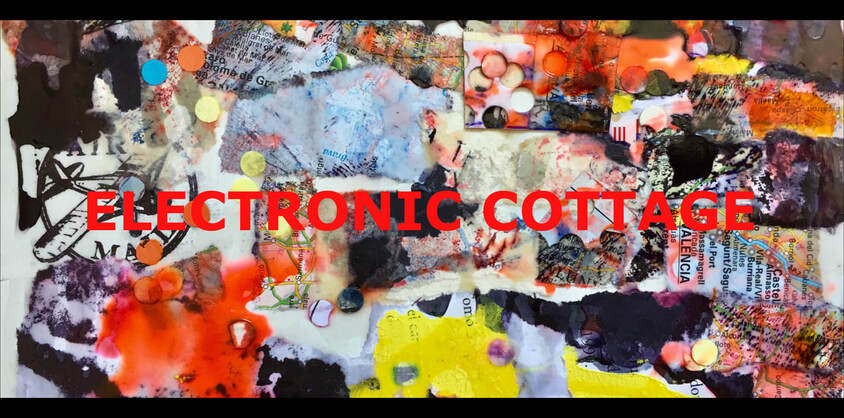
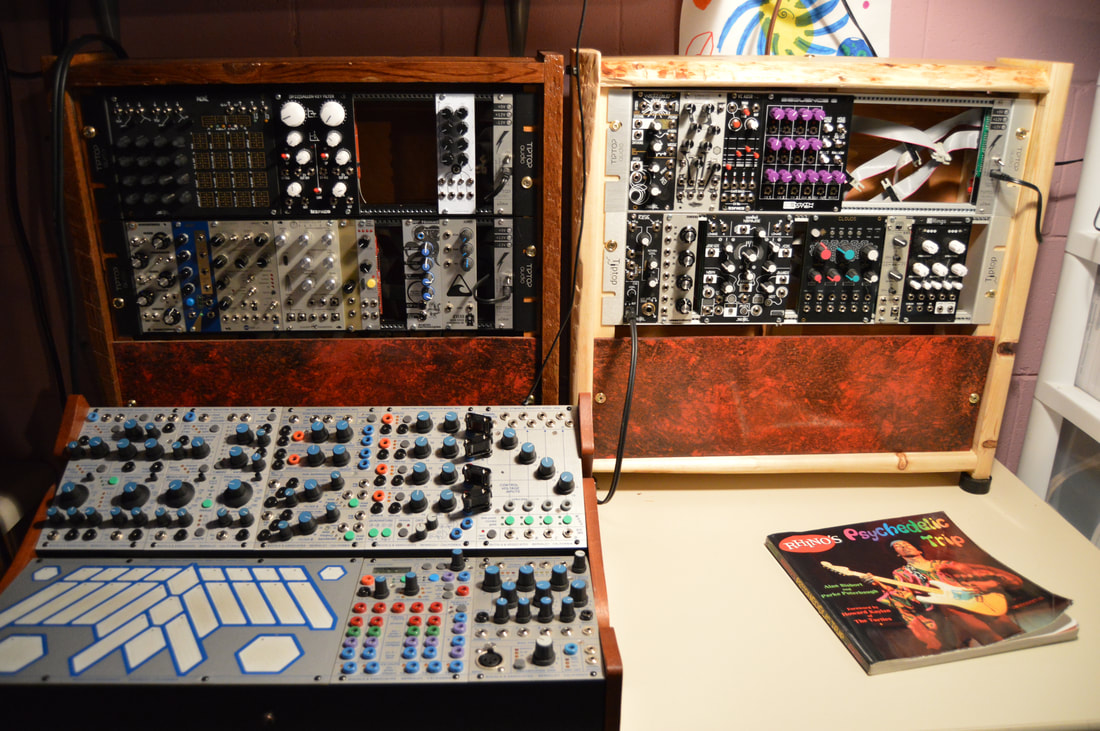
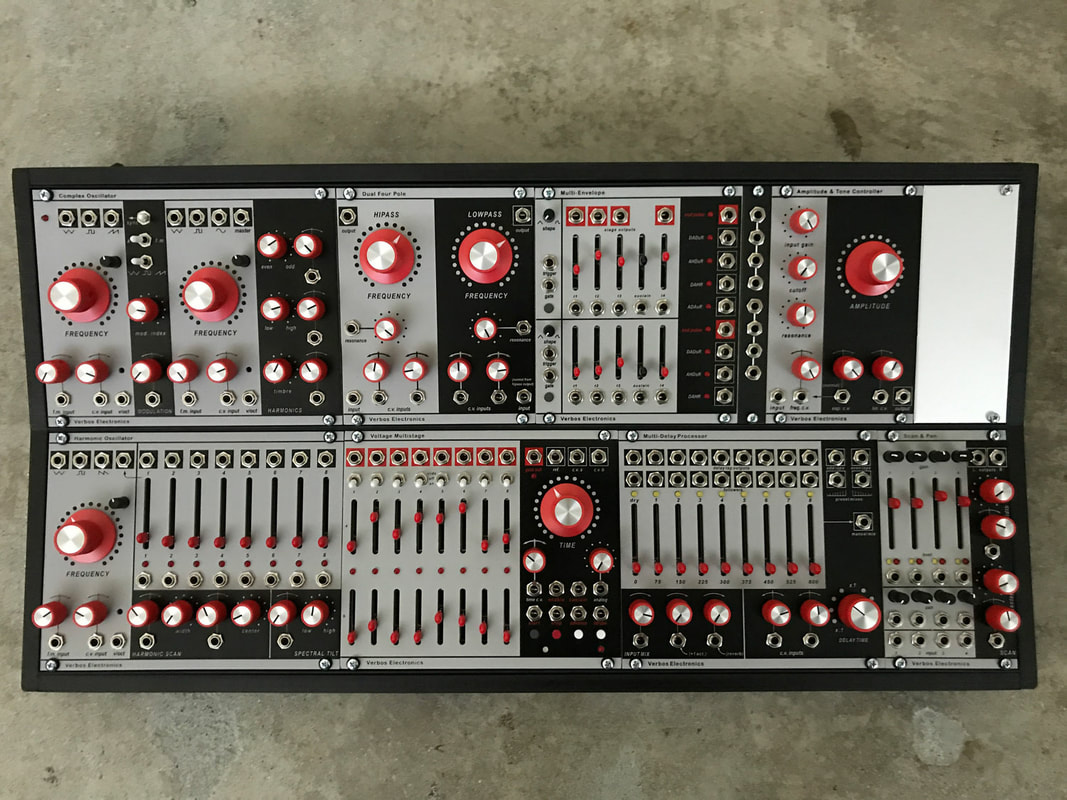
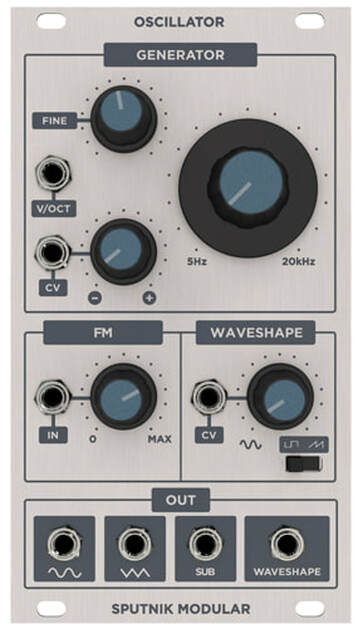
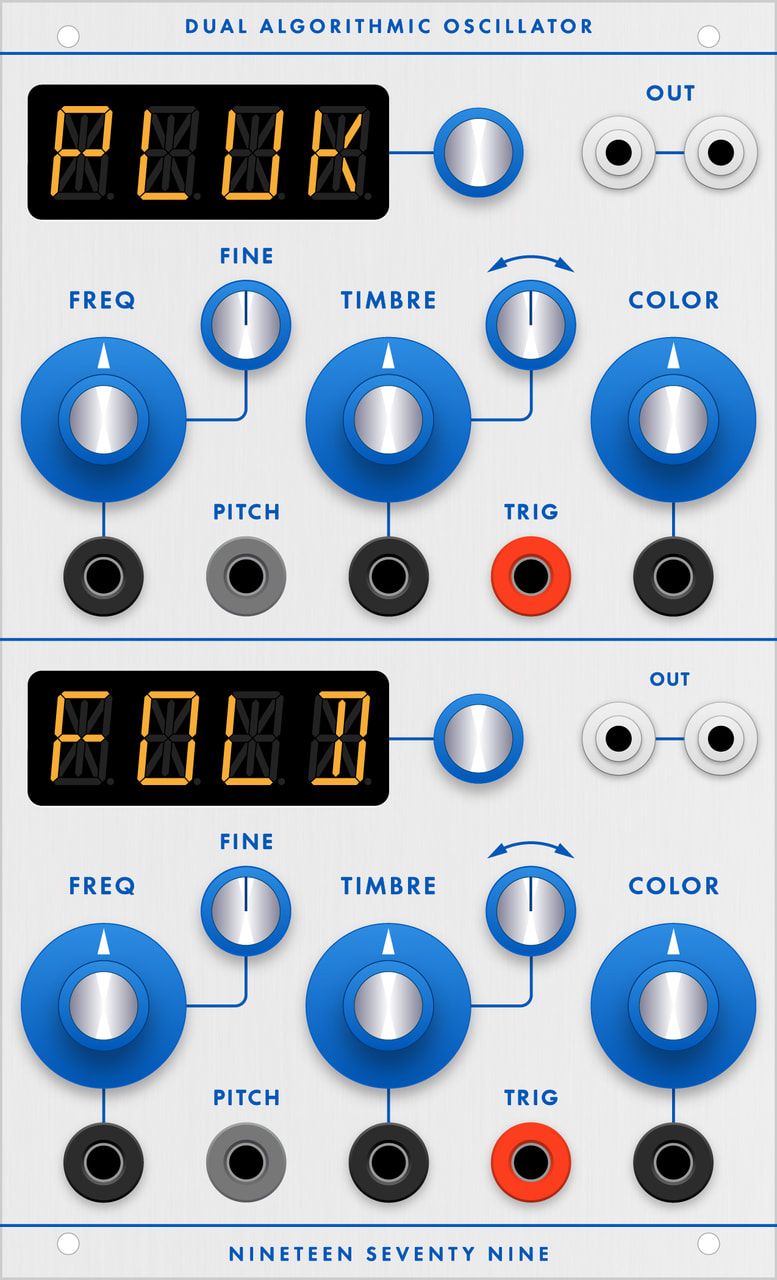
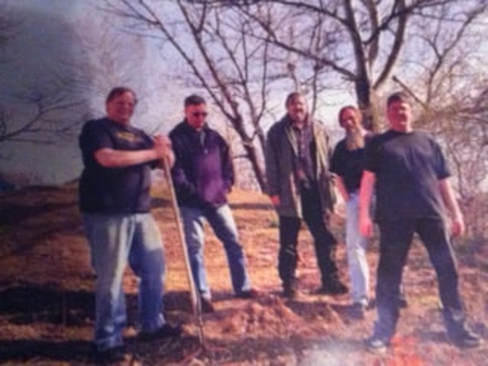
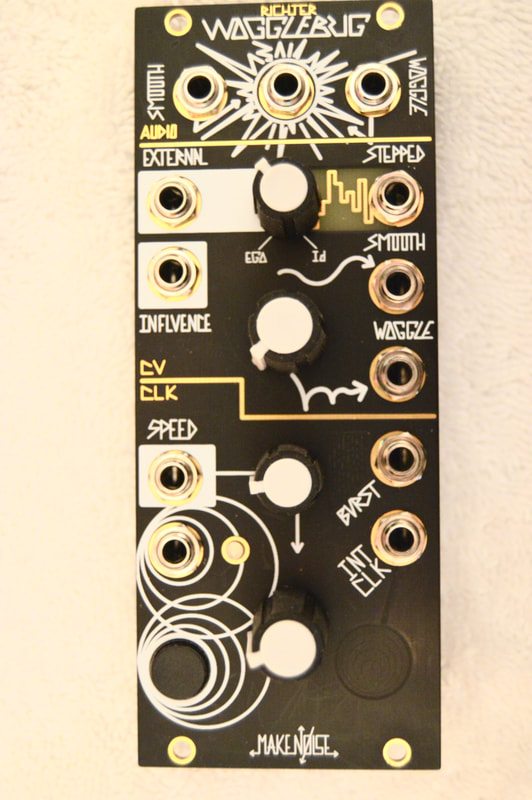
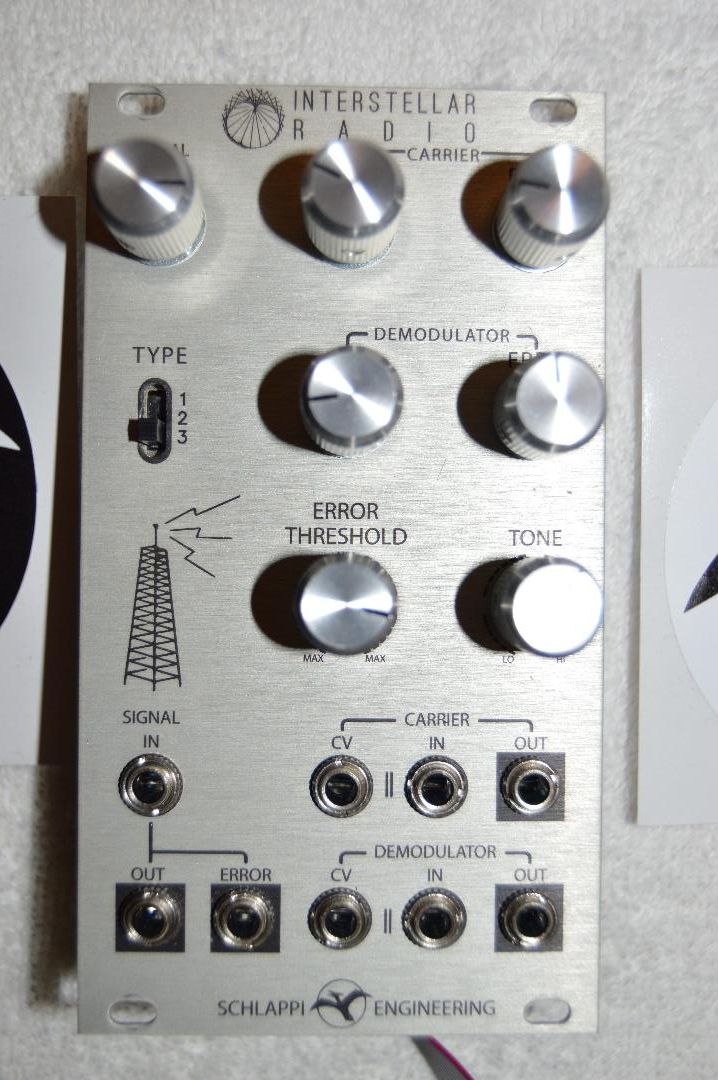

 RSS Feed
RSS Feed